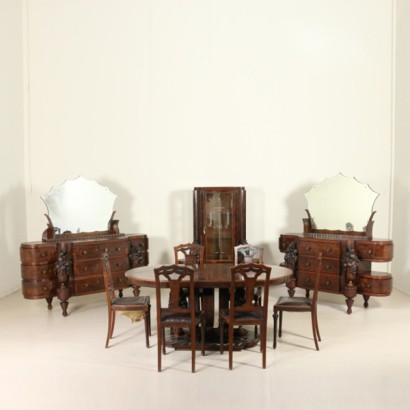Complete room decò
Features
Style: Art Deco (1920-1950)
Origin: Italy
Main essence: Walnut
Material: Solid Walnut , Walnut Burl
Description
From the line move presents richly carved pillars. Composed of two-door sideboard with mirror (185x174x63), showcase (167x140x55), single door cupboard and mirror (185x174x63), group six chairs (99x50x47), oval table (78x173x104).
Product Condition:
Requires the restoration and revival of polishing.
Additional Information
Style: Art Deco (1920-1950)
The name Art-Decò derives from the exhibition held in Paris in 1925, which was called the International Exhibition of Modern Decorative Arts and was the successor of the Liberty style.Art-Decò is a stylistic historical period formed after the Liberty floral period, shortly after the end of the First World War.
There was an almost radical change anticipated by the growth of the Precisionist movement and that of Cubism (in art), the Art-Decò furnishings were characterized by decidedly more rigid lines and the presence of geometric figures, definitively abandoning the sinuous and moved lines , of objects and furnishings, of the previous Liberty period.
It was established from the dawn of 1915 until the early 30's.
This style was transversal and major exponents were created in the most diverse art forms, from urban architecture to painting, from sculpture to glass masters, from the production of objects as a complement to furnishings to jewelry.


































